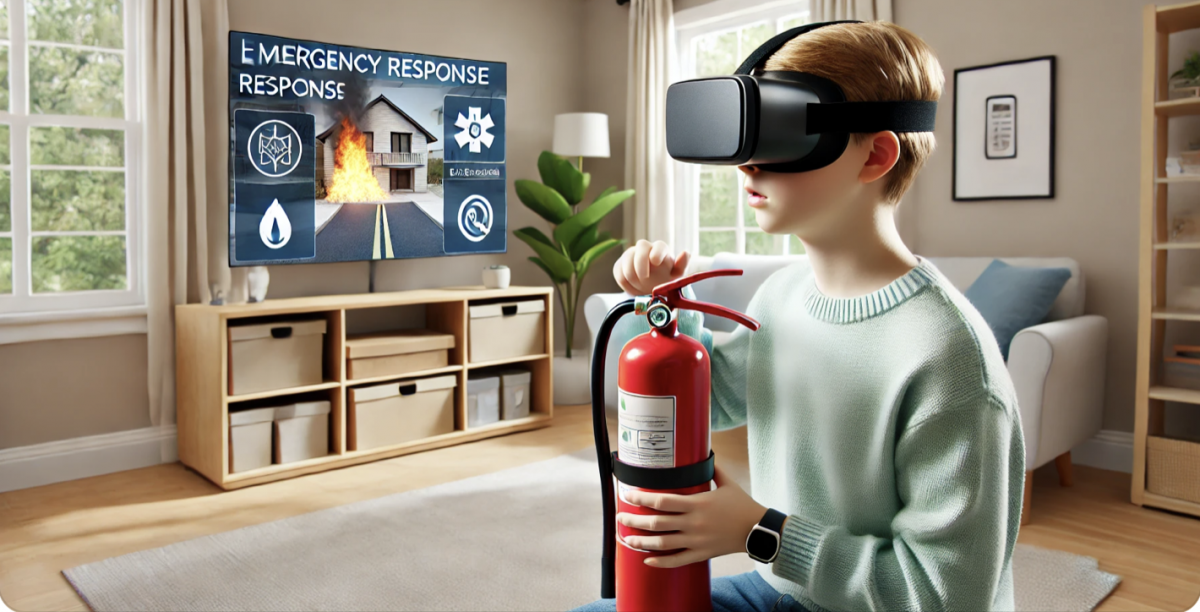During a recent lecture on AR/VR technology, we discussed its potential to assist individuals with hearing disabilities. This topic intrigued me, and later, I shared my thoughts with my mum, who surprised me by already knowing about VR’s practical applications in her work area.
My mum works at a Centre for Social Rehabilitation and Integration back in Bulgaria, specializing in helping autistic individuals integrate into society. For context – autism is a neurodevelopmental condition, characterized by difficulties in social communication, repetitive behaviors, and sensory processing challenges. One of the key hurdles autistic individuals face is understanding abstract concepts, making it essential to use unique teaching techniques tailored to their needs.
The most effective teaching method for many autistic people to this day remains “learning by doing” as it aligns with how they process information. Hands-on experience is crucial because abstract instructions or verbal explanations often do not resonate. This is where Virtual Reality (VR) becomes a game-changer.
My mum introduced me to a project called eVeR Safe, based in Athens, Greece. This initiative uses VR to train autistic individuals in how to respond to emergencies such as earthquakes, fires, or floods. Through VR glasses, participants are immersed in realistic, controlled scenarios that mimic real-life emergencies. In these environments, they can repeatedly practice critical safety skills, helping them develop both muscle memory and emotional resilience to respond when real emergencies arise.

VR’s strength lies in its ability to simulate real-world danger in a safe and structured way, allowing learners to build confidence and familiarity without risk. Additionally, VR can be tailored to meet the sensory needs of each learner, creating a less overwhelming experience than practising in unpredictable real-world situations.
For example, VR scenarios can replicate everyday spaces like kitchens or living rooms, where avatars guide learners through essential tasks like using a fire extinguisher or making an emergency call. These scenarios are interactive and immersive, with built-in calming techniques like deep breathing to help learners practice emotional regulation.
What I find most inspiring about eVeR Safe is how it bridges the gap between theory and practice. Without hands-on learning, many autistic individuals may struggle to react appropriately in emergencies due to anxiety or confusion. VR helps them acquire these crucial skills in a safe, repeatable way, equipping them to respond confidently in real-life situations.
I’d love to hear your thoughts—how else do you think VR could be used to support vulnerable populations?
Resources:
[1] The link to the project: https://www.ever-safe.eu/THE-PROJECT
[2] National Institute of Mental Health (NIMH). (n.d.). Autism Spectrum Disorder. Retrieved September 12, 2024, from https://www.nimh.nih.gov/health/topics/autism-spectrum-disorders-asd
[3] Image 1: generated by DALL-E, ChatGPT
[4] Image 2: https://www.researchgate.net/publication/341030456/figure/fig4/AS:960340082819072@1605974326054/PASS-steps-as-shown-through-the-VR-training-a-Fire-extinguisher-station-b-d-PASS-steps.png


Your blog highlights the amazing potential of VR technology to support autistic individuals. By recreating emergencies in a controlled environment, VR allows participants to practice important safety skills, this helps them build confidence and prepare for real-world problems. This hands-on approach is important, as many autistic individuals struggle with abstract instructions or unpredictable situations.
It’s inspiring how VR can be used to meet the needs of each learner, offering a safer way to learn. By adding calming techniques, like deep breathing, the experience would be also effective for emotional regulation.
Beside this, VR could be used to support other vulnerable people. It could help with PTSD by using controlled exposure therapy or be used for personalised learning in education, especially for students with special needs. VR could also benefit the elderly by providing cognitive therapy or creating immersive environments that improve memory and mental engagement.
Overall, VR has a lot of potential to create safe environments, that is what makes it a powerful tool for improving lives in many ways.